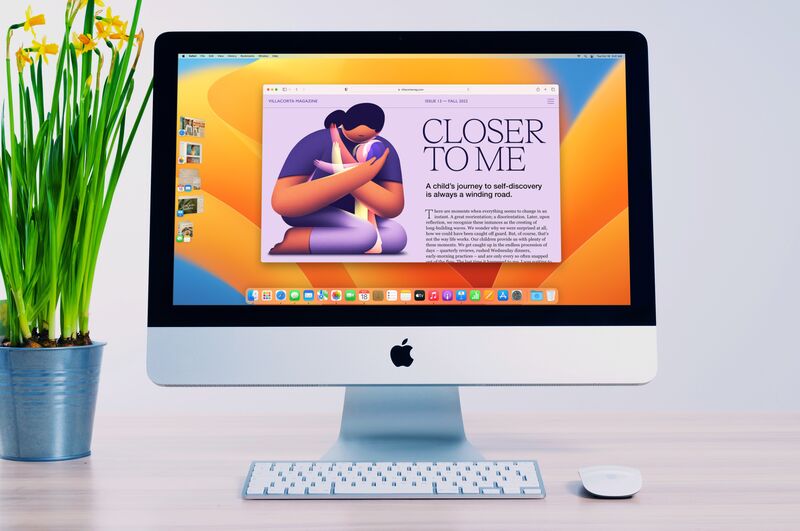Apple maintain a fairly stringent limit on what hardware will run a particular version of the MacOS. This can be really frustrating when it limits a vital piece of software you use or stops internet services from working, but don’t worry - there is a solution!
Apple don’t disclose why they do this, but the assumption would be that maintaining the software for all legacy hardware would put undue expense and bloat on the OS development. Also many features of the newer OSs utilise newer hardware to offer specific features that wouldn’t be available for older machines. This is even more relevant since Apple started the switch to their own silicon.
However this doesn’t mean that it isn’t possible to upgrade older hardware to newer versions of the OS using a ‘patch’. There are several groups that have sought to achieve this, and there is pretty widespread success allowing machines from as far back as 2009 to be upgraded to Monterey or Ventura.
At Airiam we have been using the OpenCore Legacy Patcher to provide an upgrade path for customers who want to be able to use the latest features of the OS without having to upgrade hardware. The process is inexpensive to implement and gives new life to older hardware.
The only proviso is that the customer recognises that as a ‘patch’ it is unsupported by Apple and any spurious behaviour that they encounter is likely attributed to the patch. However we have found it to be stable and reliable on most of the configurations that we have tested. If a customer is happy to take that risk then we are able to complete the upgrade for them so that they can utilise the advantages straight away.

Why Might I Want to Upgrade?
With our continuing reliance on all things internet, often the limiting factor for a machine’s usefulness is its inability to support the latest security protocols. Apple doesn’t update the older OSs with these updated protocols so at a certain point those machines that can’t go any further will find that they are unable to open websites, send email or perform internet banking. These machines are prime candidates for upgrading as this functionality will be restored post the work.
If you are interested in taking advantage of being able to use your old hardware with a later release of the OS then please contact us and we can discuss the options and work out a plan of action for getting the work done.
Requirements for Upgrade
When we perform the upgrade to an older machine we need to make sure that the experience will be acceptable and as such there are some considerations that need to be taken into account ahead of performing the operation:
- The machine has a Solid State Drive (SSD) fitted - all modern Mac Hardware runs from an SSD, and the OS is optimised for this. In our opinion, the older hardware needs to have an SSD fitted before we are happy that the OS will perform acceptably well. The benefits of an SSD are many, but the key improvement to performance is vital to the smooth running of the patch.
- The machine has at least 4GB RAM - For a long time now the minimum requirement for operating the OS has been 2GB RAM. That means to have sufficient RAM for other applications an amount greater than 2GB is required. This is easily achievable for most products however select models of MacBook Air have 2GB soldered to the Main Logic Board. These models are not viable when looking to install the patch, in our opinion.
- The customer has a full backup of the system before the upgrade so that if the patch proves to be too unstable we can restore the previous OS and data.
- The older the hardware the less likely the graphics will be able to cope well with some of the visual rendering effects of the OS. In these cases we recommend turning off the OS transparency and motion effects.
OS Updates
It’s important to note that when installing maintenance updates to the OS, an overwrite of several of the ‘root patches’ will occur. These are required to make items like the graphics work properly. The OpenCore app detects this and will guide you through installing them (a very straight forward process).
On the other hand as the ‘patch’ removes any limitation to the machine being able to install any newer versions of the OS you can find yourself in the situation where the machine has installed a version that it can’t run, or is yet to be supported by OpenCore. Therefore we recommend turning off Automatic Updates and manually choosing when to make changes to the system. If unsure you can always check with us to find out if it’s safe to proceed.
Some software performs a check for a Metal compatible graphics card upon startup. If one is not detected they won’t run. The most notable of these is Apple’s own Final Cut, Logic and iWork apps. If you are looking to upgrade the OS to use this software then you might be out of luck if the machine is too old, although you may be able to run an older version that doesn’t perform these checks.
Putting old hardware to good use is a great way of increasing your productivity utilising resources you already own as well as helping do your bit for our planet with less e-waste going to landfill.

